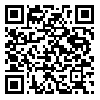Volume 22, Issue 3 (September 2024)
Iranian Rehabilitation Journal 2024, 22(3): 519-528 |
Back to browse issues page
Download citation:
BibTeX | RIS | EndNote | Medlars | ProCite | Reference Manager | RefWorks
Send citation to:



BibTeX | RIS | EndNote | Medlars | ProCite | Reference Manager | RefWorks
Send citation to:
Ewah P A, Awhen P A, Womboh I, Dan F A. Modulation of Stroke-related Impairment With Physiotherapy Intervention: A Case Report of Stroke Survivor With Right Hemiparesis and Diabetes. Iranian Rehabilitation Journal 2024; 22 (3) :519-528
URL: http://irj.uswr.ac.ir/article-1-1950-en.html
URL: http://irj.uswr.ac.ir/article-1-1950-en.html
1- Department of Physiotherapy, Faculty of Allied Medical Sciences, University of Calabar, Calabar, Nigeria.
2- Department of Physiotherapy, Faculty of Medical Rehabilitation, University of Medical Sciences, Ondo, Nigeria.
3- Department of Human Kinetic, Faculty of Science Education, University of Calabar, Calabar, Nigeria.
2- Department of Physiotherapy, Faculty of Medical Rehabilitation, University of Medical Sciences, Ondo, Nigeria.
3- Department of Human Kinetic, Faculty of Science Education, University of Calabar, Calabar, Nigeria.
Abstract: (3163 Views)
Objectives: Erroneous perceptions about the cause of stroke may negatively impact survival during and after stroke occurrence. Patient health decisions may be influenced by various factors, such as advice, previous experience, beliefs and online information. Some patients of African descent maintain that stroke is caused by witchcraft and its related impairments can be permanently ameliorated by divination. Accordingly, seeking medical intervention is seen as a waste of resources and time, making it difficult for health professional to offer adequate care. This study explores the importance of patient education combined with physiotherapy intervention in the modulation of stroke-related impairment amid erroneous beliefs about the incidence and management of stroke.
Case Presentation: This study is a case report of a 63 year-old Nigerian female with diabetes. She is a hypertensive stroke survivor with a complaint of inability to walk, weakness of muscle, and loss of functional movement in her right hand and leg from a year ago. She underwent 8 weeks of individualized home physiotherapy, such as progressive manual resistance exercise, transcutaneous electrical nerve stimulations (ENS), electrical muscle stimulation, task-oriented circuit training, peripheral neuromuscular stimulation, task-specific training, and gait/balance exercise, in addition, to the use of routine drugs and diet 2 h daily for 3 days a week using discrete practice.
Discussion: There was an improvement in muscle strength, hand functional abilities, gait/balance, activities of daily living and a reduction in spasticity, glucose level, body adiposity (body fat percentage (%BF), visceral fat percentage (%VF) and body mass index [BMI]) and blood pressure/derived cardiovascular indices as per post-intervention scores. Many factors could influence the patient’s decision and continuous education of the patient and informal caregivers may positively influence the patient’s condition and ameliorate erroneous beliefs among stroke survivors. We also provide evidence to corroborate and strengthen existing evidence that stroke-related impairments, can be modulated with physiotherapy intervention. We recommend that physiotherapists should include interventions targeted at increasing muscle mass and reducing body fat when treating stroke survivors to ameliorate the negative impact of stroke on the musculoskeletal structure, stroke recurrence, and enhancement of functional performance in activities of daily living.
Case Presentation: This study is a case report of a 63 year-old Nigerian female with diabetes. She is a hypertensive stroke survivor with a complaint of inability to walk, weakness of muscle, and loss of functional movement in her right hand and leg from a year ago. She underwent 8 weeks of individualized home physiotherapy, such as progressive manual resistance exercise, transcutaneous electrical nerve stimulations (ENS), electrical muscle stimulation, task-oriented circuit training, peripheral neuromuscular stimulation, task-specific training, and gait/balance exercise, in addition, to the use of routine drugs and diet 2 h daily for 3 days a week using discrete practice.
Discussion: There was an improvement in muscle strength, hand functional abilities, gait/balance, activities of daily living and a reduction in spasticity, glucose level, body adiposity (body fat percentage (%BF), visceral fat percentage (%VF) and body mass index [BMI]) and blood pressure/derived cardiovascular indices as per post-intervention scores. Many factors could influence the patient’s decision and continuous education of the patient and informal caregivers may positively influence the patient’s condition and ameliorate erroneous beliefs among stroke survivors. We also provide evidence to corroborate and strengthen existing evidence that stroke-related impairments, can be modulated with physiotherapy intervention. We recommend that physiotherapists should include interventions targeted at increasing muscle mass and reducing body fat when treating stroke survivors to ameliorate the negative impact of stroke on the musculoskeletal structure, stroke recurrence, and enhancement of functional performance in activities of daily living.
Keywords: Wrong perception and belief, Stroke-related impairment, Progressive manual resistance exercise, Task-oriented circuit training, Individualized home physiotherapy
Article type: Case Reports |
Subject:
Neurorehabilitation
Received: 2023/04/14 | Accepted: 2023/11/25 | Published: 2024/09/1
Received: 2023/04/14 | Accepted: 2023/11/25 | Published: 2024/09/1
Send email to the article author








